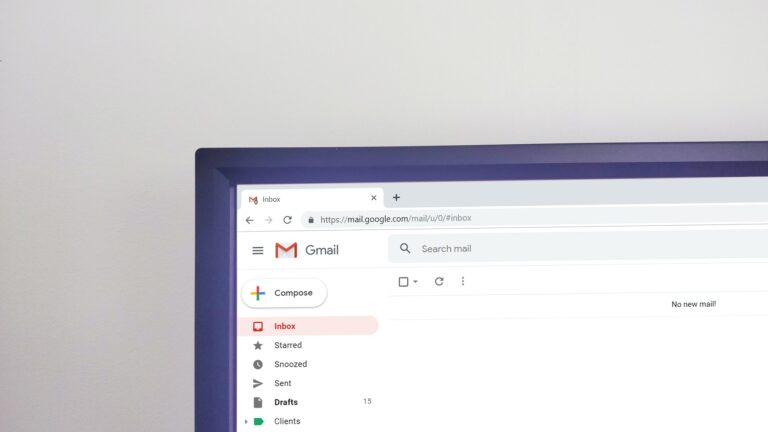It all starts with the subject line. The primary goal of the subject line of your sales emails is to get prospects to open it. That is it, that is the only goal. The subject line must spark curiosity and interest on the part of the prospect. It must be compelling and engaging. It must be a copywriting masterpiece.
First some statistics.
According to an Optinmonster.com article from August 2022, “47% of email recipients open an email based on the subject line alone”. The author of the article goes on to say that “69% of email recipients report email as spam based solely on the subject line”.
It is estimated that 333.2 billion emails are sent every day around the world according to a Zippia Research post from October of 2022. The author goes on to summarize that companies that A/B test their emails see a 37% higher return than those that do not. If there are now eight billion people in the world, then each one of them is receiving 41.65 emails per day. It is further claimed that 122.23 billion of those emails sent every day are spam emails.
It does not really matter how many total emails are sent each day. What does matter is your prospects are overwhelmed with email: marketing emails, sales emails, personal emails, internal company emails, company broadcast emails, phishing emails, and more. It all comes down to the subject line to do the work of breaking through all that noise.
So why do you use the same subject line repeatedly for outbound sales prospecting emails? Because you a) think that the subject line [still] works, b) your sales enablement platform offers you only one choice, c) you do not A/B test the subject line, or d) any number of other excuses.
The subject line of a sales email starts the chain of events that drives all the down funnel metrics. Open rates, click rates, opportunity creation rates, and closed-won rates are all dependent on the prospect clicking open – that is the one and only job for the subject line of your sales emails.
And if a prospect never opens your email, they will never know that you have an excellent product or service that can help them solve a problem they have or do not know that they have until you bring it to their attention.
Since so much depends on the subject line, then why do you spend time crafting only a single subject line only to never change it again? Modern sales enablement tools track open rates. That is easy. So, when sales are lagging or slowing down and you are looking for the reason, how many times do you look at the subject lines of your emails? Not often enough. It is easy to blame soft sales on everything but the subject line.
In outbound prospecting, email is often thought of as the way to warm up a prospect. If the prospect never opens your email, they will still be stone cold. The first email subject line will determine the fate of all subsequent emails from you.
So, what is an acceptable open rate? 100% open rate? 50% open rate? 25% open rate? 5% open rate? The only goal should be to increase the open rate above the last time that you measured it. If you are using A/B testing on your subject lines – yes, plural – then you should be looking for a lift – that is an increase in open rates. If you see a decline in open rates, that subject line does not resonate with your audience. If you see an increase in open rates, then you might have something to work with and keep improving. Knowing the current open rate for a particular email or sequence of emails sets your benchmark. It really does not matter what that number is at the start because the goal of testing is to improve. So, knowing where you are is the starting point.
There is a difference between a sales email and a marketing email. Sales emails have a connection with the sales process. They are one-to-one between the salesperson and the prospect and are often highly customized. Marketing emails on the other hand are part of the marketing process and are one-to-many and seldomly customized beyond the greeting (Hi Person!). Marketing emails are top of funnel activities that are designed to build brand awareness, informational in nature, and designed to jumpstart the sales process. Marketing emails are often highly styled in HTML to support images and company branding with links to everything in the company’s product portfolio. On the other hand, sales emails are often plain text and rather (intentionally) drab by comparison. Marketing emails are often sent from “info at company name dot com.” Sales emails should be sent using the email address of the BDR, SDR, or AE doing the prospecting and establishing the personal connection between seller and buyer.
A Google search will easily turn up articles on open rates by industry. Beware: these open rates are likely for marketing emails, not sales emails. Your marketing colleagues send lots and lots of emails. A quick look at your junk mail folders and you can see all the marketing emails you get. If you have not recently emptied your spam folder, you can take look at the subject lines of these emails. Are any of them inspiring? Are any of them worth a click to see what might be inside? Probably not, that is why they are in the spam folder in the first place.
Are your sales email subject lines any better? Would you click on any of the emails with the subject lines that you have sent if you received them? My guess is that you would not. So why do you send them?
Again, a Google search quickly returns dozens of posts that offer up 10, 50, 100 or more email subject lines that promise your emails will get opened if you use one of them. If only these articles included some metrics – not that you would believe them if they did – as to how many times the email subject line was tested, what was the open rate, when was it sent, what was the purpose of the email, and other measures of success. What worked last week, last month, last quarter, last year might not work tomorrow, next week, next month, next quarter or next year.
Your spam folder, your junk mail folder, your deleted emails folder is full of subject lines that failed to work. Seriously, would you open an email with a subject line that reads “Mobile App”? No, that is a real email from a real person (from an aol.com email address by the way; that is so last decade) offering real services (or are they?). What about one with a subject line that reads “Get ready to Skyrocket your Sales!” – compelling? Or one that shouts, “Prepare for Revenue in 2023”? Sorry, but these email subject lines are just not compelling. Apologies to you if you are the author of these uninspiring subject lines.
So just why do prospects click on what they click on? It is an important question that is easier to answer than you think. Prospects click on what is familiar, from someone they know, a brand that they trust and recognize, or to retrieve something that they requested. After that any sales emails (and marketing emails alike) are headed for the digital recycle bin. Furthermore, you have all been warned repeatedly not to click on emails from unknown sources, that they are dangerous, and you will lose everything to scammers and spammers if you do.
Open rates for outbound sales emails decline sharply with each subsequent attempt to reach the prospect (in other words, stop bothering me). Many of you use multi-touch outreach patterns that include calls, emails, and social media touchpoints. Call blocking and spam filters relegate you to prospecting jail, and once locked up it is almost impossible to get out. When you look at your spam folder, you will see stacked emails from the same person several times over referencing the email that was sent to you yesterday on top of the email sent to you the day before. And so on and so forth.
So why do prospects not click on your emails? Again, an important question that is easy to answer. Prospects simply are not interested in what you have to offer. You are targeting the wrong person in the organization, someone who does not have buying authority, someone who does not control the budget, or someone who is perfectly happy with the solution that they have in place and there is no compelling reason for them to be interested in what you are offering.
What can you do to fix this? If your subject line reads like spam, your emails will be treated like spam. You need to be on a first name basis with your prospects. You need to keep it nice and short and make it personal. You need to tell them what is in it for them.
Personalization is key. If you have researched your prospect, you know that they fit your ideal customer profile, that they are in the right role at the right company. A goal for your research is to find fodder to personalize the opening paragraph of the email. Personalized emails have more impact.
Be clear on why you are emailing them. Tell them what is in it for them. Focus on helping the prospect solve a problem that they have or alerting them to a problem that they do not know that they have. To be clear, you must first understand the prospects situation. Because if you do not know their situation, how do you know if and how you can help them? Spray and pray is a common sales tactic used by salespeople. But it is not a viable sales prospecting strategy.
In Conclusion
If the subject line is not relevant or compelling, the email will never get opened. If the email is not opened, the recipient will never click on the call-to-action you have selected to include. If the prospect reading the email is not interested in the offer, then you are likely to be banished to the junk or spam folder and never get out of junk mail jail. Start with the subject line.
About the Author
Stephen Howell is a multifaceted expert with a wealth of experience in technology, business management, and development. He is the innovative mind behind the cutting-edge AI powered Kognetiks Chatbot for WordPress plugin. Utilizing the robust capabilities of OpenAI’s API, this conversational chatbot can dramatically enhance your website’s user engagement. Visit Kognetiks Chatbot for WordPress to explore how to elevate your visitors’ experience, and stay connected with his latest advancements and offerings in the WordPress community.



Leave a Reply
You must be logged in to post a comment.